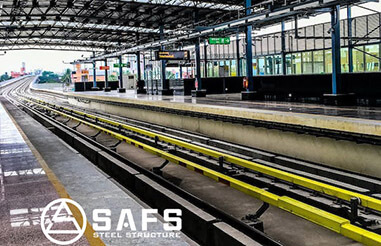Dapeng Town Industrial Park, Tongshan District, Xuzhou City, Jiangsu Province, China
Preface: Hot-dip pure zinc, zinc-iron alloy and aluminum-zinc alloy coatings are common hot-dip metal coatings that play an important role in improving corrosion resistance and extending the service life of materials. This paper summarizes and abstracts information on the definitions and typical applications of these three types of coatings, as well as the general requirements for hot-dip plated products: adhesion of the coatings, and the requirements for the specification and evaluation of the weight of the coatings. Source: GB/T 2518-2019 “Continuously hot-dip zinc and zinc alloy coated steel sheet and strip”.
Hot-dip zinc coating
Definition : Hot-dip zinc coating obtained on a continuous hot-dip galvanizing line where pre-treated steel strip is dipped into a molten zinc bath with a zinc content of not less than 99%. General description : Pure zinc (Z) plating is used in a variety of applications where enhanced corrosion resistance is required. Typical applications : Pure zinc plating is widely used in manufacturing and construction due to its excellent corrosion resistance. It is suitable for a range of applications where steel needs to be coated for sacrificial protection to extend the life of a product or structure, such as building and construction components (e.g. steel structures, purlins, hoists, etc.), steel frame trim, painted rainwater pipe fittings, automotive parts and body panels, tubes and profiles, engineered components, household appliances (e.g. washing machine frames and panels, stove panels, dryers, loudspeaker stands, etc.), industrial products (e.g. pumps, tanks, heat exchangers, etc.), and industrial products (e.g. oil pumps, oil tanks, heat pumps, heat exchangers, etc.). oil tanks, heat exchangers, ventilator housings, trapezoidal profiles, cable tray systems), as well as components for electronics and agricultural machinery.

Hot-dip zinc-iron alloy coating
Definition : In a continuous hot-dip galvanizing line, pre-treated steel strips are immersed in a molten zinc solution with a zinc content of not less than 99% and are alloyed to form a zinc-iron alloy layer, which usually has an iron content of 8% to 15%. General description: Zinc-Ferro alloy coatings (ZF) are suitable for most applications for subsequent painting, mainly for body panels in the automotive industry. Typical applications : Zinc-iron alloy coatings are suitable for most applications for subsequent painting, especially for body panels in the automotive industry. Its high surface hardness and good resistance to subfilm corrosion make it the preferred choice for exterior parts such as automobiles and household appliances.
Hot-tip aluminum-zinc alloy coating
Definition : The coating obtained on a continuous hot-dip aluminum-zinc plating line where pre-treated steel strips are immersed in a molten aluminum-zinc alloy solution containing about 55% aluminum and about 1.6% silicon, with zinc as the remaining component. General description : Aluminum-zinc alloy plating (AZ) provides excellent plating barrier protection and electrochemical protection. It has higher corrosion resistance in most environments than the above mentioned coatings and has proven long-term durability. Typical applications : This coated steel is widely used for roofing and walling, either directly or as a substrate for color coated panels. Other applications for this coated steel include building and construction components (e.g., fenestration systems, residential building keels, roofs, walls, ceilings, doors, etc.), storm drain fittings, furniture and outdoor cabinets, unexposed automotive parts, appliances (e.g., ovens, heaters), as well as plumbing and computer chassis.